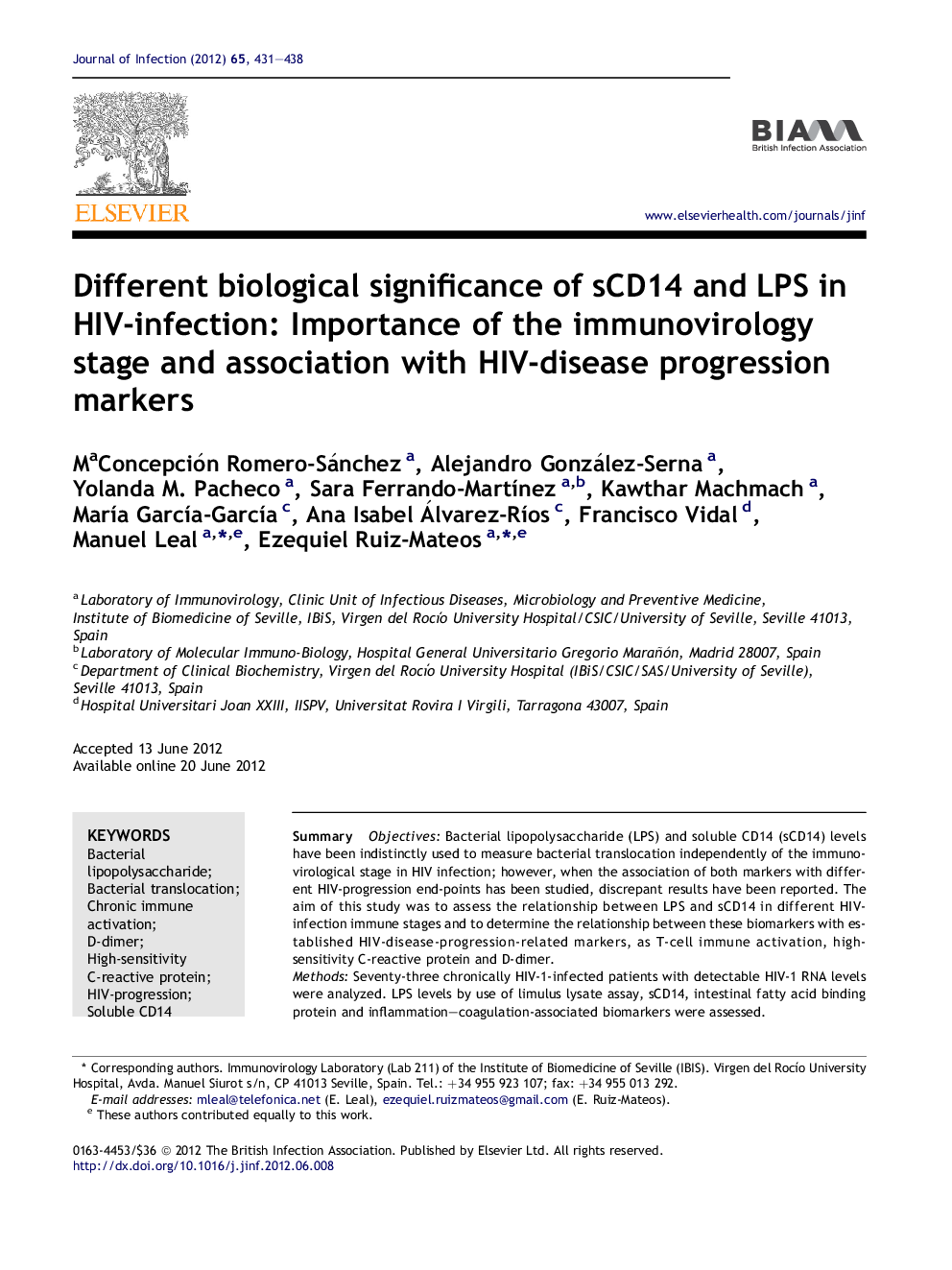| Article ID | Journal | Published Year | Pages | File Type |
|---|---|---|---|---|
| 3374669 | Journal of Infection | 2012 | 8 Pages |
SummaryObjectivesBacterial lipopolysaccharide (LPS) and soluble CD14 (sCD14) levels have been indistinctly used to measure bacterial translocation independently of the immunovirological stage in HIV infection; however, when the association of both markers with different HIV-progression end-points has been studied, discrepant results have been reported. The aim of this study was to assess the relationship between LPS and sCD14 in different HIV-infection immune stages and to determine the relationship between these biomarkers with established HIV-disease-progression-related markers, as T-cell immune activation, high-sensitivity C-reactive protein and D-dimer.MethodsSeventy-three chronically HIV-1-infected patients with detectable HIV-1 RNA levels were analyzed. LPS levels by use of limulus lysate assay, sCD14, intestinal fatty acid binding protein and inflammation–coagulation-associated biomarkers were assessed.ResultsIn this study, we found that LPS and sCD14 levels were only associated when low CD4+ T-cell levels and high HIV RNA levels were present. In addition, only sCD14 levels, but not LPS, were independently associated with HIV-disease progression-related markers, supporting the clinical importance of sCD14.ConclusionsThese results indicate that LPS and sCD14 have a different biological significance and should not be indistinctly used without taking the HIV immunovirological stage into account.
